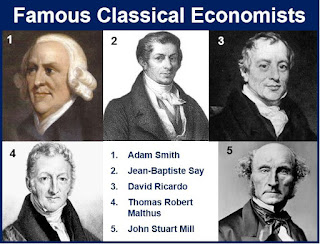UGC NET,UPSC and other competitive Exams -Theory of unavoidable losses(Diminshing returns ) or law of Variable proportion (Microeconomics) and stages of creation(short run creation)
 |
| Law of Diminshing return |
In financial aspects, consistent losses is the decline in the negligible (gradual) yield of a creation procedure as the measure of a solitary factor of creation is steadily expanded, while the measures of every single other factor of creation remain steady.
The theory of unavoidable losses expresses that in every single profitable procedure, including a greater amount of one factor of creation, while holding all others steady ("ceteris paribus"), will sooner or later yield lower gradual per-unit returns.The theory of consistent losses doesn't infer that including to a greater extent a factor will diminish the all out creation, a condition known as negative returns, however in reality this is normal.
The hypothesis expresses that when the variable factor (work) is utilized increasingly more with the given fixed factor (capital), all out result of work (TPL) increments at the expanding rate at the beginning period of creation, after certain point complete result of work increments at the diminishing rate, arrives at greatest and begins to decay. To sum things up, when utilized more units of variable factor progressively with the fixed factor, minimal result of work in the end diminishes. This is the reason, this hypothesis is otherwise called theory of unavoidable losses (or decreasing minor efficiency) . Along these lines, the law of variable extent shows that how yield changes when an ever increasing number of variable data sources are utilized with the steady measure of fixed factor.
Phases of law of Diminshing returns
There are three phases of creation first, second and third.
First phase of Creation
This phase of creation is the phase of expanding returns since normal item increments and arrives at the greatest when negligible item rises to average item in spite of peripheral item has just started to decrease. Henceforth, the principal organize closes with the beginning of the fall of APL. The primary driver of the expanding returns are the more full and progressively productive use of fixed variables and specialization of the work.
Second phase of creation
This phase of creation is the consistent losses on the grounds that both normal item and minor item decrease yet stays positive all through this stage. In this manner, the subsequent stage begins with the fall of normal item and ends when complete item arrives at greatest (when MPL is zero). At this stage, yield increments at the diminishing rate due to diminishing minimal item. In any case, APL continues expanding until peripheral item rises to average item.
The primary driver of unavoidable losses are the abundance of variable factor over the fixed factor, indissoluble nature of the fixed factor and no ideal substitution between factor inputs. What's more, rare factor is taken as the fixed factor and its inventory can't be expanded. What's more, additionally the variables are not ideal substitute by suspicion.
Third phase of creation
This is the phase of negative returns as a result of the negative minimal result of work. The absolute item decreases right now to negative minor result of work. In any case, normal item stays positive inasmuch as all out item is sure. The fundamental driver of the negative returns are overabundance of variable factor (work) over the fixed factor (capital) and trouble in the administration and control.
Phase of activity for a judicious maker
A judicious maker never creates at the third stage in light of the fact that right now item is negative and lessens all out item. Cutting the quantity of work would give the maker the more yield. Henceforth, third stage isn't the phase of activity for a discerning maker. Likewise, a discerning maker doesn't create at the primary stage on the grounds that at this stage minimal result of the fixed factor (capital) is negative. To build the variable factor implies the more full and increasingly productive utilization of fixed factor. Thus, the maker doesn't deliver in the primary stage. The main outstanding phase of activity is the subsequent stage.
An objective maker works right now the absolute yield increments right now diminishing normal item and minimal item. Henceforth, a balanced maker works in the vicinity of seconed phase of creation. Be that as it may, the specific point where the maker works depends of the overall cost of the elements
we accept that creation work comprises of just two factor inputs-work and capital. Also, as needs be, the capacity is Q = f (K, L), which incorporates just two components (K and L) by dropping out different elements. This is on the grounds that K and L are the prevailing element inputs .
Holding in any event one factor input consistent, in a perfect world capital, implies that law of variable extent partners with the short-run creation work.
Presumptions of hypothesis
1) Innovation stays fixed.
2) In any event one factor (capital) must be consistent.
3) Factor inputs (work and capital) are not flawless substitutes.
4)Variable factor (work) is homogeneous.
Model
A typical model is adding more individuals to a vocation, for example, the gathering of a vehicle on a manufacturing plant floor. Sooner or later, including more laborers causes issues, for example, laborers getting in one another's way or every now and again ending up sitting tight for access to a section. In these procedures, delivering one more unit of yield per unit of time will in the end require progressively more use of the contribution, because of the info being utilized less successfully.
The theory of unavoidable losses is a crucial guideline of economics.It assumes a focal job underway hypothesis.




Comments
Post a Comment